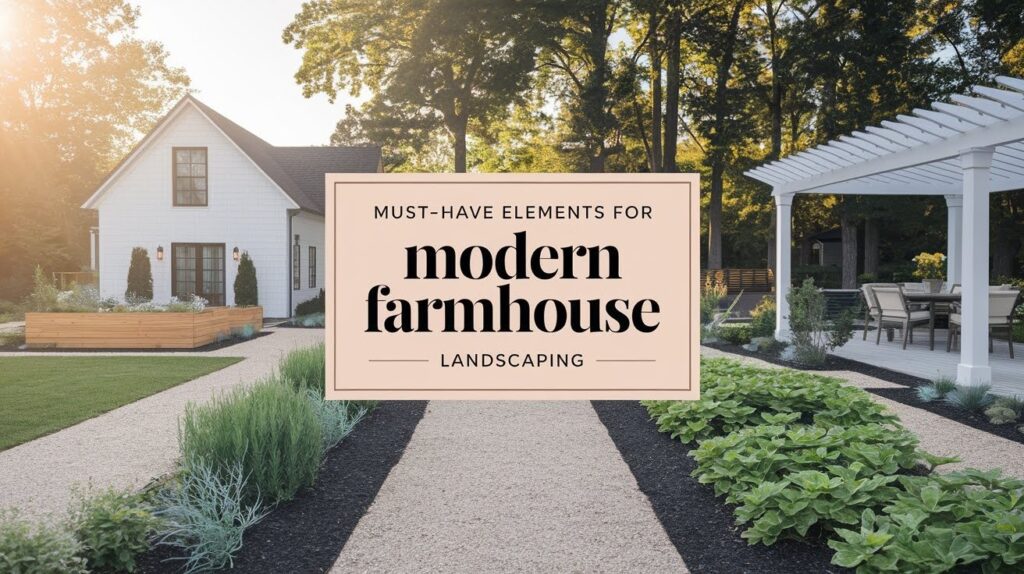Modern farmhouse landscaping has become one of today’s most sought-after design trends, combining the warmth of country living with clean, contemporary lines.
This style achieves a perfect balance between rustic charm and modern simplicity, creating outdoor spaces that feel both timeless and fresh.
The appeal lies in its ability to merge practical functionality with visual beauty. Homeowners are drawn to landscapes that offer low-maintenance solutions while maintaining character and personality.
Modern farmhouse design emphasizes natural materials, structured plantings, and purposeful outdoor living areas that serve both daily needs and entertaining goals.
This approach creates cohesive outdoor environments that complement the architectural style while providing year-round interest and usability for families seeking authentic, comfortable living spaces.
List of Elements for Modern Farmhouse Landscaping
1. Solar-Powered Structures
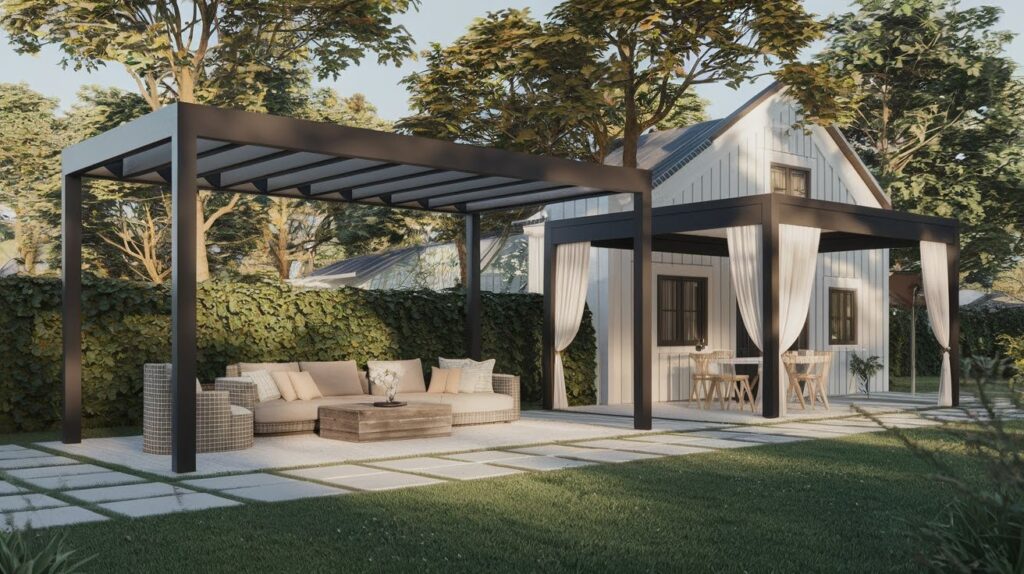
Solar technology has found its way into outdoor design, offering both function and sustainability. The PowerPatio provides a stylish pergola solution that generates clean energy while creating comfortable shade for outdoor activities.
Similarly, the PowerGazebo combines multi-functional outdoor living space with solar output capabilities.
These structures deliver triple benefits: protection from sun and weather, environmental responsibility through renewable energy, and long-term cost savings on electricity bills.
2. Native and Drought-Tolerant Plants
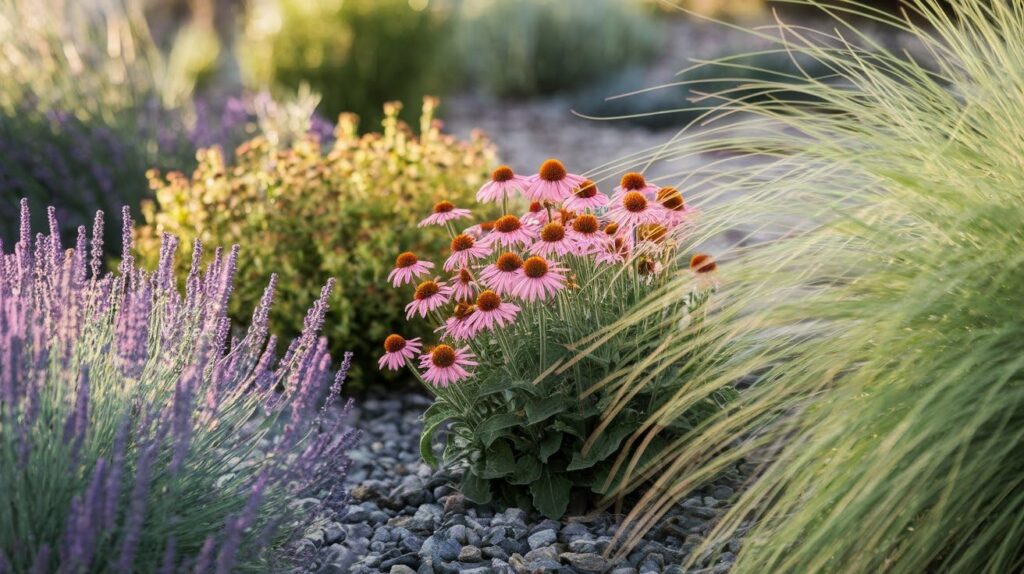
Choosing plants that naturally thrive in your local climate reduces maintenance while supporting local ecosystems.
Consider incorporating lavender for its fragrant blooms and silvery foliage, echinacea for colorful summer flowers that attract butterflies, and ornamental grasses that provide texture and movement.
These selections not only enhance the authentic farmhouse feel but also conserve water and require minimal care once established.
3. Gravel or Crushed Stone Pathways
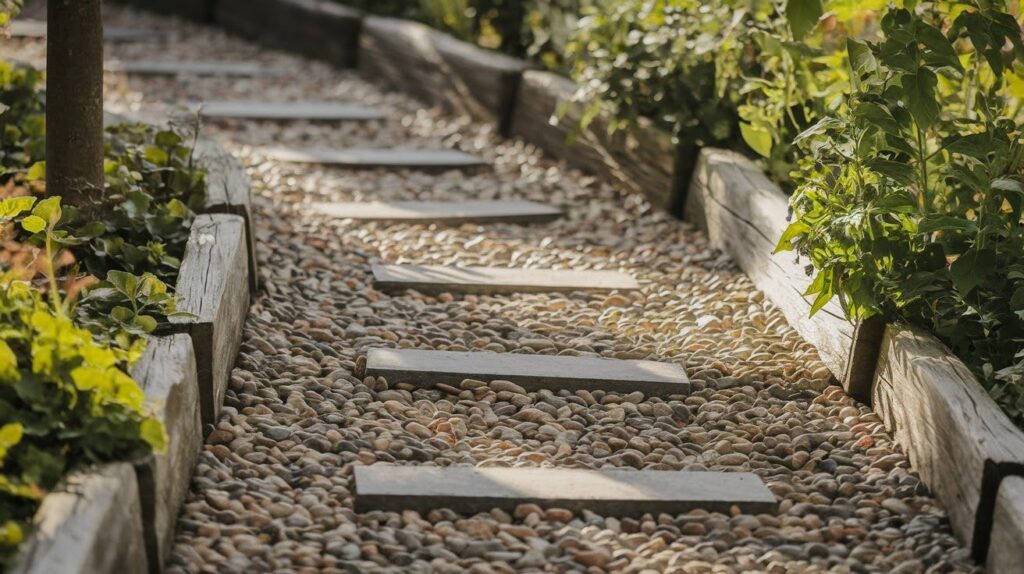
Well-defined pathways guide visitors through your outdoor space while adding rustic texture that complements the farmhouse aesthetic. Gravel and crushed stone options remain budget-friendly while providing excellent drainage.
Pair these materials with wood or metal edging to create clean lines and prevent spreading. The natural sound of footsteps on gravel adds an authentic country element to your landscape.
4. Raised Garden Beds

Elevated planting areas offer practical benefits for growing vegetables, herbs, or flowers while adding visual structure to your yard. Wood planks or weathered steel create the perfect farmhouse appearance, and the raised format makes gardening easier on your back.
These beds also help organize garden space efficiently, allowing for better soil control and defined growing areas.
5. Black or White Board-and-Batten Fencing
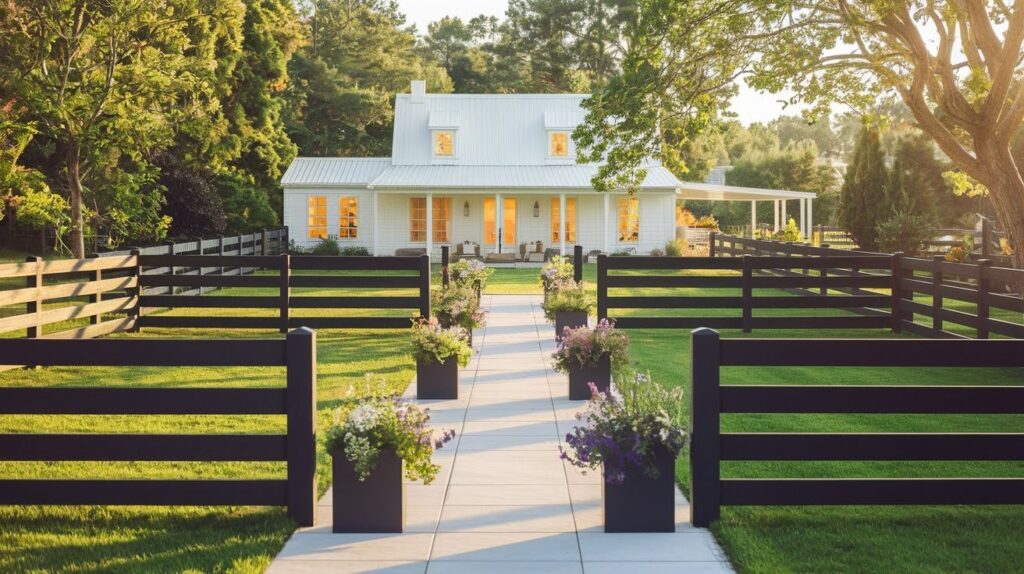
This classic fencing style has become synonymous with modern farmhouse design. The vertical slat pattern adds strong visual contrast and structure to garden beds or property boundaries.
Paint or stain the boards to match your home’s exterior, or choose crisp white for a fresh, clean appearance that highlights surrounding plantings.
6. Outdoor String Lights or Lanterns

Ambient lighting transforms outdoor spaces for evening enjoyment. Mix vintage Edison bulbs with solar-powered options to create warm, inviting atmospheres. String lights can highlight key landscape zones, outline seating areas, or accent architectural features.
The soft glow encourages longer outdoor gatherings and adds magical appeal to summer evenings.
7. Wide Front Porch with Seating
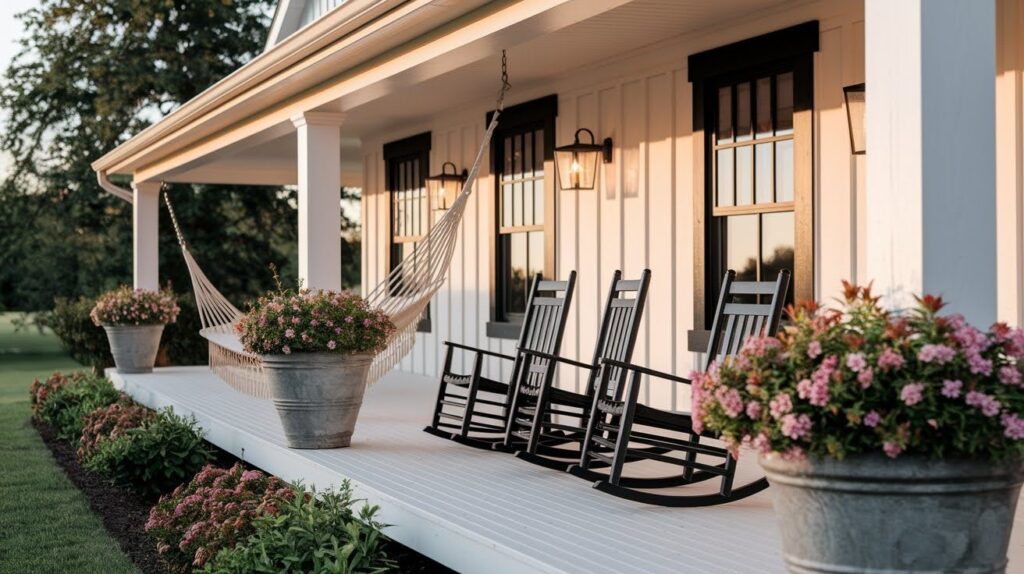
A generous front porch serves as the welcoming face of farmhouse style. Rocking chairs, porch swings, or simple wooden benches create spaces for relaxation and conversation.
This design element encourages neighborly interactions and provides a transition zone between indoor and outdoor living. Pair seating with planters or climbing vines for added natural beauty.
8. Fire Pit Area
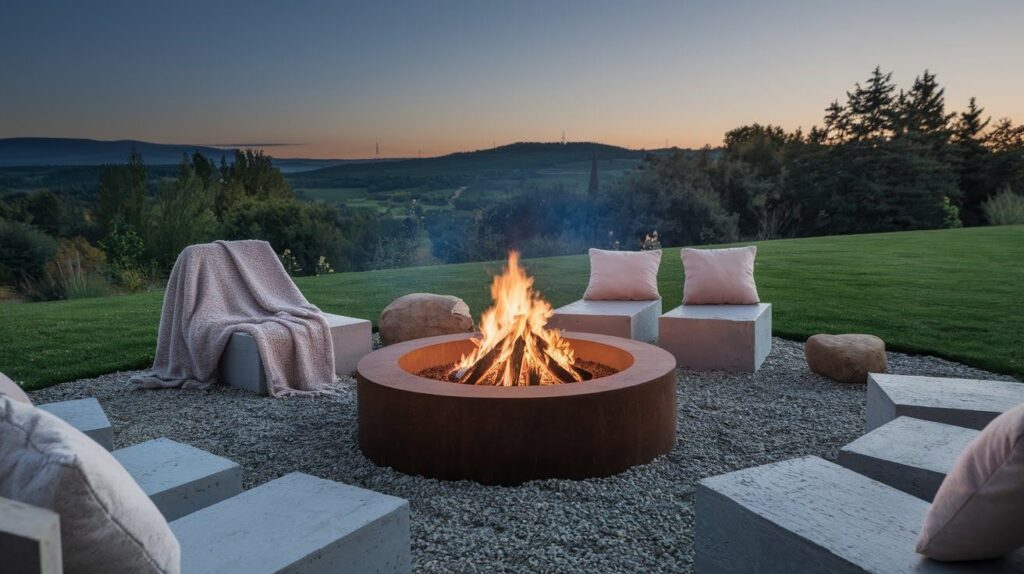
A central fire feature becomes the heart of outdoor gatherings throughout the year. Stone, brick, or corten steel materials provide rustic appeal while ensuring safety and durability.
Surround the fire pit with gravel for drainage and easy maintenance, then add comfortable seating to create a natural gathering spot for family and friends.
9. Decorative Windmill or Vintage Garden Decor
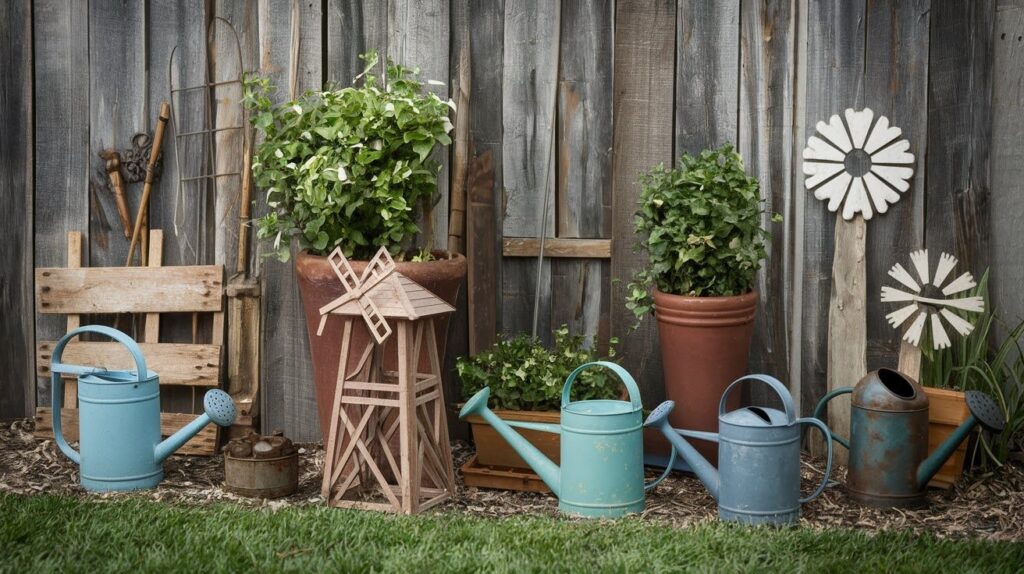
Carefully chosen vintage elements add authentic Americana charm without overwhelming the space. A decorative windmill, antique farm tools, or weathered signs prevent the landscape from feeling too modern or clinical.
Use these accent pieces sparingly to maintain clean lines while adding personality and historical reference.
10. Exposed Wood or Reclaimed Timber Elements
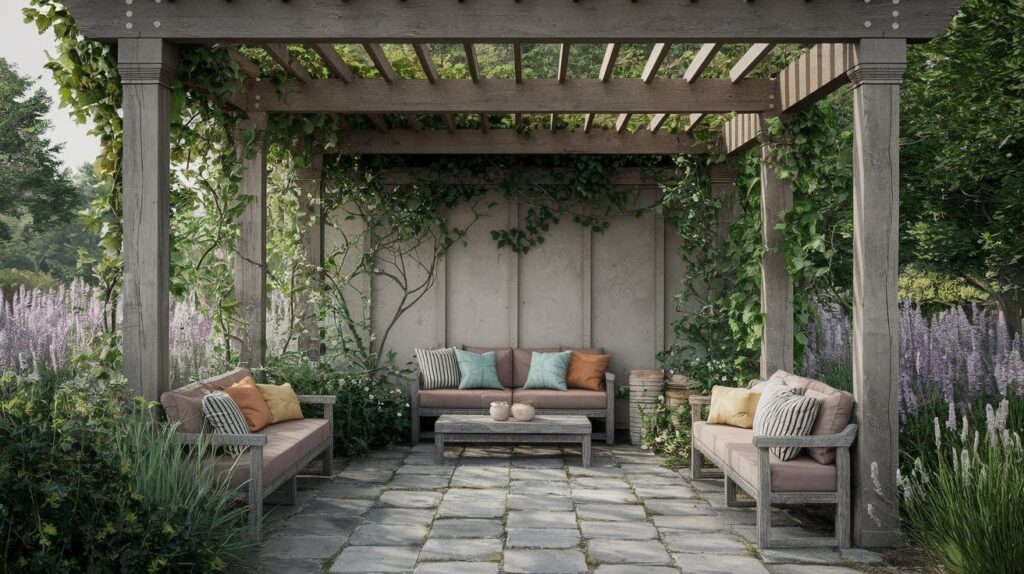
Natural wood brings warmth and texture to outdoor spaces through pergolas, trellises, raised beds, or custom benches. Reclaimed timber adds character and environmental consciousness to your design.
Choose weather-resistant species like cedar or teak for longevity, and allow the wood to age naturally for authentic patina over time.
11. Shiplap or Stone Accent Walls
Architectural details like shiplap siding or natural stone create focal points for outdoor kitchens or patio backdrops. These materials add visual interest and depth while maintaining the farmhouse aesthetic.
Natural earth tones work best in outdoor settings, complementing surrounding plantings and hardscape materials.
12. Layered Planting Borders
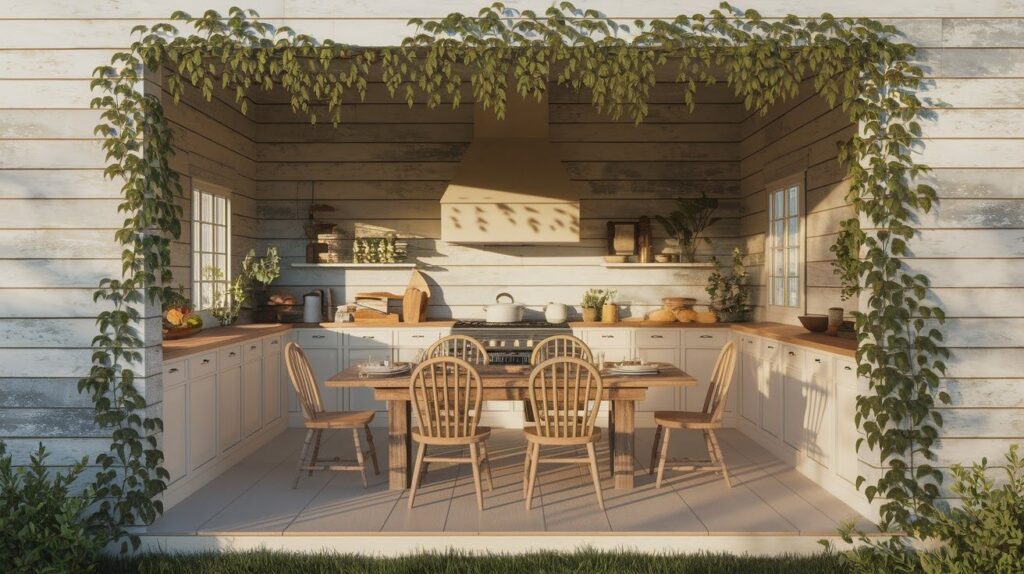
Create visual depth by combining plants of different heights and textures. Start with tall shrubs as backdrop plants, add mid-level perennials for seasonal color, and finish with low groundcover for fullness.
Mix evergreen plants for year-round structure with flowering varieties for seasonal interest, ensuring your borders look attractive throughout all seasons.
13. Galvanized Planters and Troughs
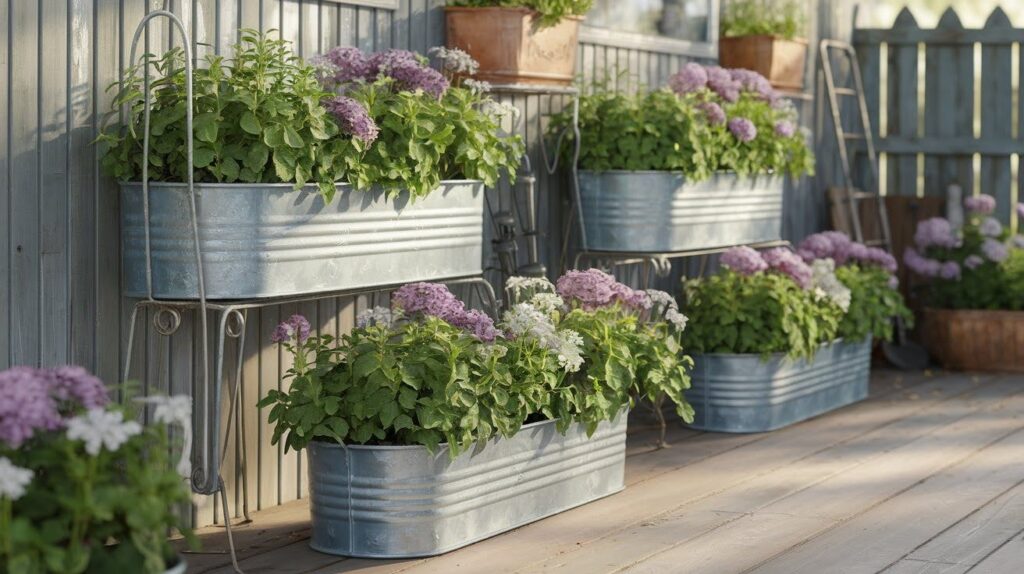
Metal containers bring industrial charm that perfectly complements modern farmhouse style. Galvanized planters work well for seasonal displays, herb gardens, or vegetable growing.
These containers are both affordable and durable, developing attractive patina over time while providing excellent drainage for plant health.
14. Open Lawn Space
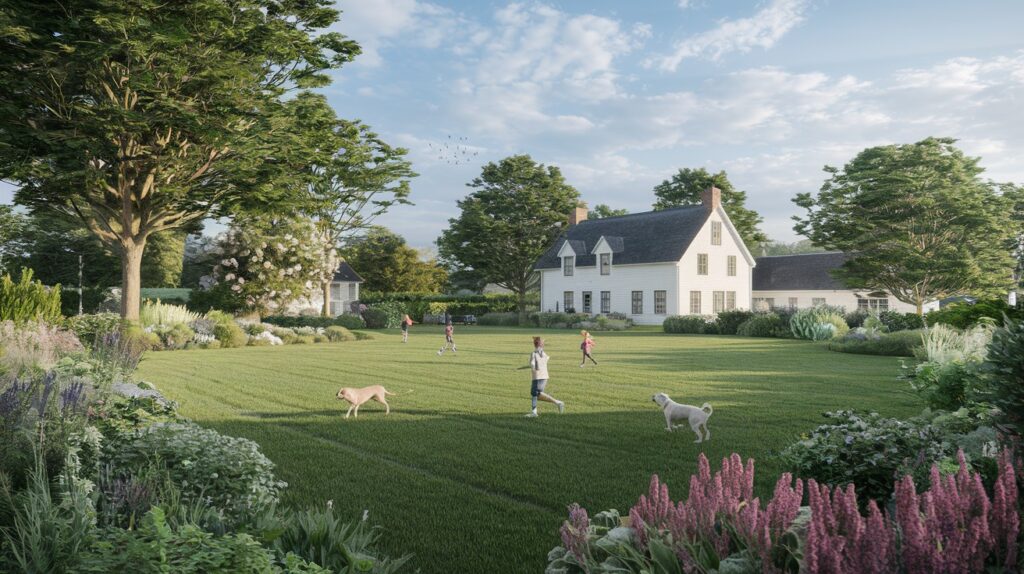
Maintain generous areas of open grass for multiple uses including children’s play, pet exercise, or casual lounging. Avoid overcomplicating these spaces with too many hardscape features.
Keep lawn edges natural or softly defined to maintain the relaxed farmhouse feel while providing functional outdoor living space.
15. Rainwater Harvesting Elements
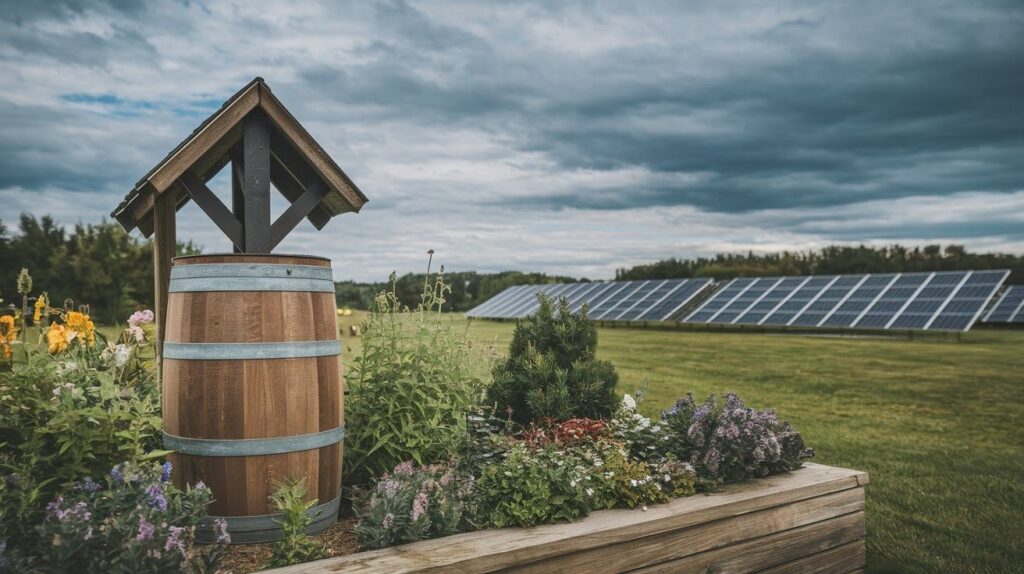
Water conservation features like decorative barrels, underground cisterns, or dry riverbeds serve both practical and aesthetic purposes.
16. Vertical Garden or Trellised Vines
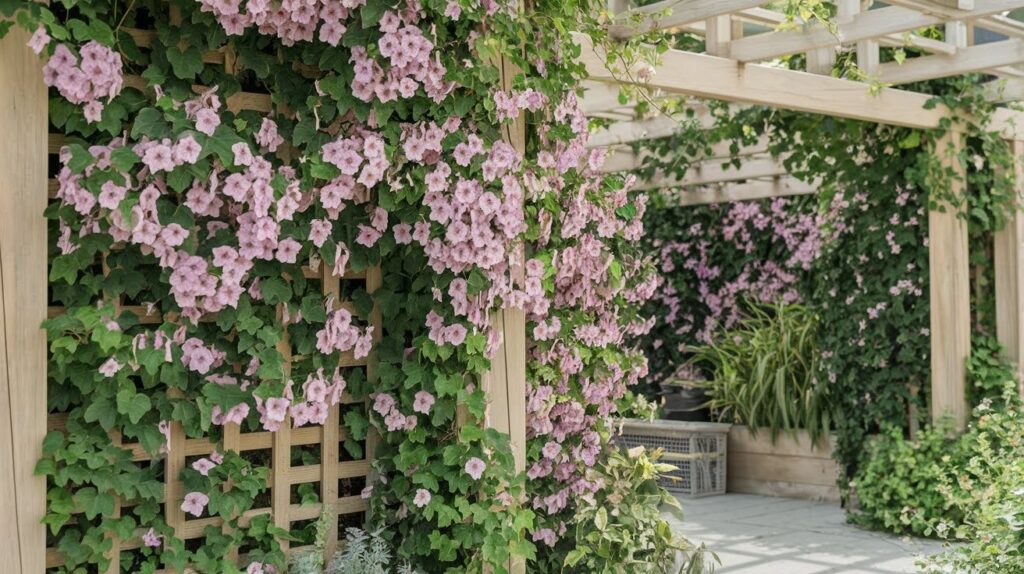
Maximize growing space and add vertical interest with climbing plants on trellises or garden structures. Clematis provides colorful blooms, jasmine offers fragrant flowers, and grapevines contribute both beauty and potential harvest.
These vertical elements also create natural privacy screens while softening hard architectural lines.
17. Farmhouse-Style Outdoor Furniture

Choose furniture made from natural materials like wood, metal, and canvas in neutral or earth-tone colors. Prioritize durability and weather resistance while maintaining the comfortable, unpretentious farmhouse aesthetic.
Simple designs with clean lines work best, allowing natural materials and quality construction to take center stage.
18. Stone or Brick Edging
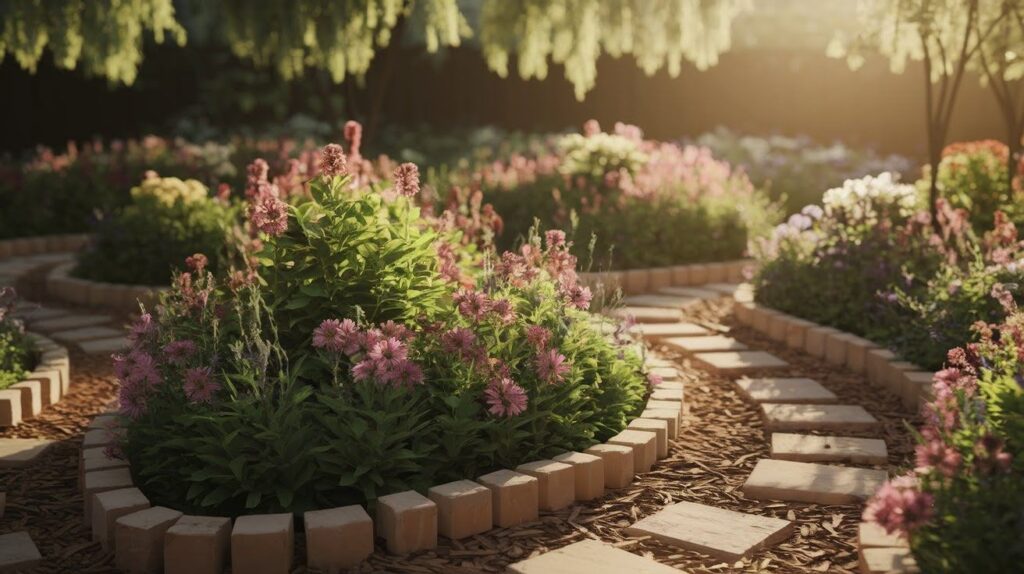
Define flower beds and walkways with natural stone or brick borders that provide subtle structure without overwhelming plantings.
These timeless materials age beautifully and create clean, finished appearances that enhance both formal and informal planting schemes while requiring minimal maintenance over time.
19. Accent Trees or Specimen Plantings
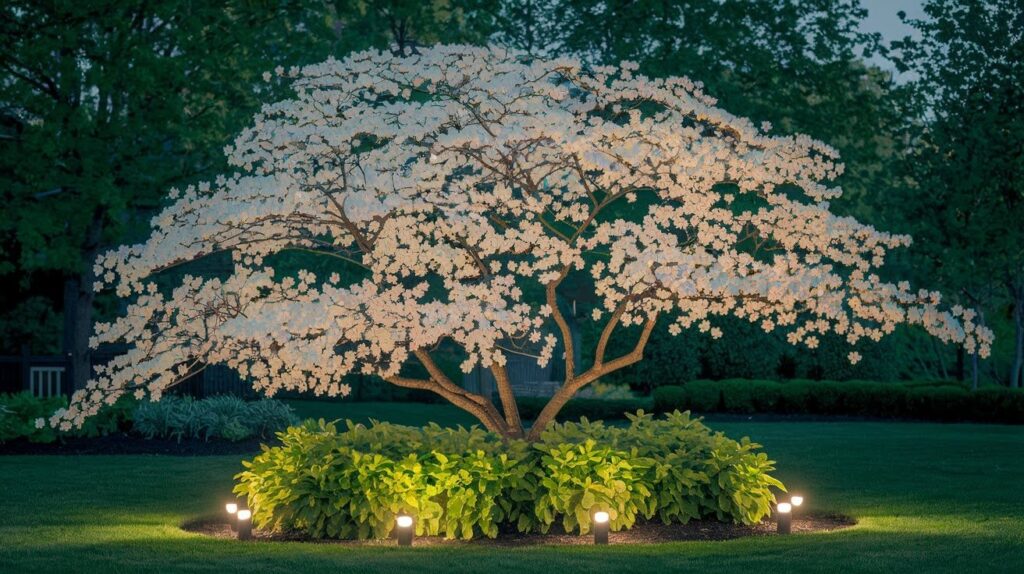
Strategic tree placement creates focal points and adds structural backbone to your landscape design. Consider olive trees for Mediterranean flair, maples for seasonal color, dogwoods for spring blooms, or fruit trees for both beauty and harvest potential.
Use outdoor lighting to highlight these specimen plants during evening hours, extending their visual impact throughout the day.
Bringing It all Together: Designing with Balance and Flow
- Create seamless transitions between architecture and landscape- Your outdoor spaces should feel like natural extensions of your home through careful material selection and architectural echoes that tie interior and exterior areas together.
- Use repetition to unify different zones throughout your property- Echo the same stone from your home’s foundation in garden edging, repeat porch railing colors in fence panels, and maintain consistent color palettes that flow from one area to another for visual harmony.
- Resist overcomplication and focus on simplicity as your guiding principle- A few well-chosen features create more impact than numerous competing elements that dilute your design’s effectiveness, staying true to authentic modern farmhouse style.
- Plan for year-round visual interest with strategic plant combinations- Mix evergreen plants that maintain structure during winter months with deciduous trees and flowering perennials that offer seasonal variety, ensuring your space remains attractive through all weather conditions.
- Design with flexibility to accommodate changing lifestyle needs- Leave room for additions, modifications, and natural evolution so your landscape can adapt and mature alongside your family, creating that authentic, lived-in farmhouse feel over time.
Conclusion
Modern farmhouse landscaping successfully combines rustic charm with contemporary functionality, creating outdoor spaces that serve both aesthetic and practical purposes.
By thoughtfully integrating elements like solar-powered structures, native plant selections, and inviting hardscapes, you can build a landscape that enhances both visual appeal and environmental sustainability.
The key to success lies in starting small and building gradually. Choose one or two elements that resonate with your vision, then expand your design over time to create a cohesive outdoor environment that truly reflects your personal style and values.
This measured approach ensures your landscape develops authentically while remaining manageable and budget-conscious.
With careful planning and patient implementation, your modern farmhouse landscape will become a harmonious blend of beauty, function, and sustainability that your family will enjoy for years to come.
Frequently Asked Questions
What makes a landscape style “modern farmhouse”?
Modern farmhouse landscaping combines traditional country elements with clean, contemporary design principles. It emphasizes natural materials, functional outdoor spaces, and low-maintenance plant choices that create authentic yet refined outdoor environments.
Can I implement modern farmhouse landscaping on a small budget?
Yes, many elements like gravel pathways, native plants, and DIY raised beds are very affordable. Start with one or two key features and gradually add more elements over time to spread costs while building a cohesive design.
Which plants work best for modern farmhouse landscapes?
Native and drought-tolerant species like lavender, echinacea, and ornamental grasses are ideal choices. These plants require minimal maintenance while providing authentic farmhouse appeal and supporting local wildlife throughout the growing season.
How do I maintain the balance between rustic and modern elements?
Focus on clean lines and simple forms while using natural materials like wood, stone, and metal. Avoid overcrowding your space with too many decorative elements, and let the quality of materials and thoughtful placement create visual impact.
Do solar-powered landscape features really provide practical benefits?
Solar structures like PowerPatio pergolas and PowerGazebos offer genuine energy savings while providing shade and outdoor living space. They reduce electricity costs, support environmental sustainability, and add modern functionality to traditional farmhouse aesthetics.

